
J. Denison, MAP of the STATES of MARYLAND and DELAWARE, published in Jedidiah Morse’s American Geography, 3d ed., 1796, SPECIAL COLLECTIONS (The Huntingfield Map Collection) (Image Format Copyrighted and Courtesy of the Maryland State Archives)

View of Frederick Town attributed to John Markell, 1844. Oil on canvas. 24" x 37 1/2". (Private collection; photo, Museum of Early Southern Decorative Arts.)
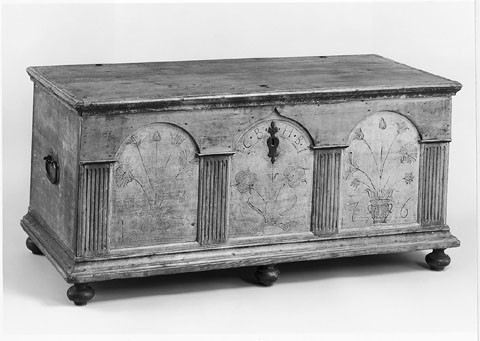
Chest, Lancaster, Pennsylvania, 1776. White pine and white oak with yellow pine and walnut. H. 23 1/2", W. 44 7/8", D. 22 3/4". (Courtesy, Yale University Art Gallery, Mabel Brady Garvan Collection.)
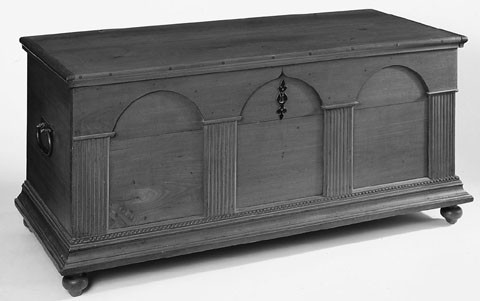
Chest, probably Frederick County, Maryland, 1770–1780. Walnut with tulip poplar. H. 231/4", W. 511/4", D. 23". (Private collection; photo, Gavin Ashworth.)
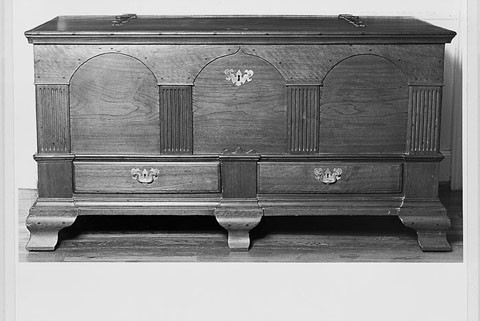
Chest, Frederick County, Maryland, 1770–1780. Walnut with yellow pine. H. 29 3/8", W. 56", D. 28 1/2". (Private collection; photo, Museum of Early Southern Decorative Arts.) The lower portions of the feet are restored.

Schrank, Frederick County, Maryland, 1775–1785. Walnut with tulip poplar. Dimensions not recorded. (Courtesy, Maryland Historical Society.) The turned feet are restored.
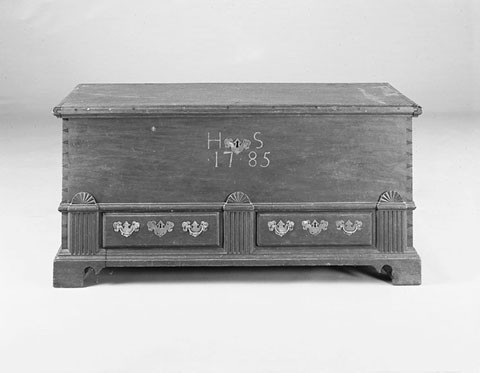
Chest, Hagerstown, Maryland, 1785. Walnut. H. 24 1/2", W. 31", D. 22 1/2". (Courtesy, Sotheby’s.)
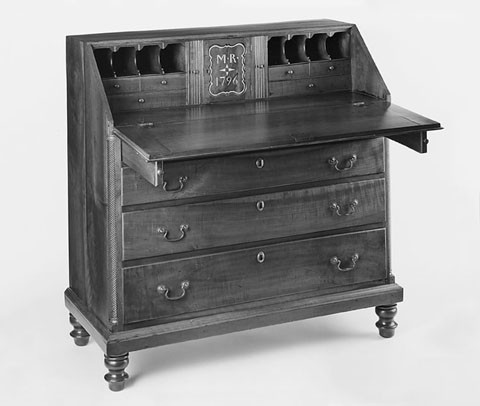
Desk, Hagerstown, Maryland, 1796. Cherry with yellow pine and cherry. H. 37 5/8", W. 44 1/2", D. 20 3/4". (Courtesy, Washington County Historical Society, Hagerstown; photo, Gavin Ashworth.) The desk originally had bracket feet.

Detail of the prospect door of the desk illustrated in fig. 8. (Photo, Gavin Ashworth.)
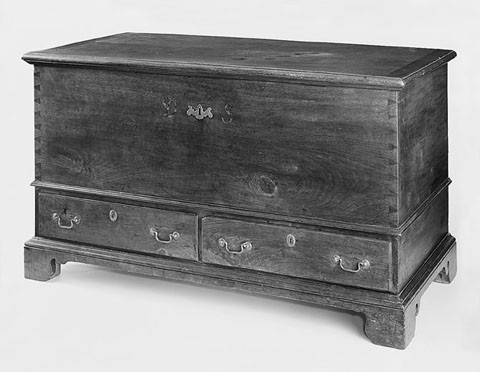
Chest, Frederick County, Maryland, 1780–1790. Walnut; maple and putty inlay. H. 29 1/4", W. 51", D. 24 3/4". (Private collection; photo, Gavin Ashworth.)

Detail of the inlay on the chest illustrated in fig. 10. (Photo, Gavin Ashworth.)
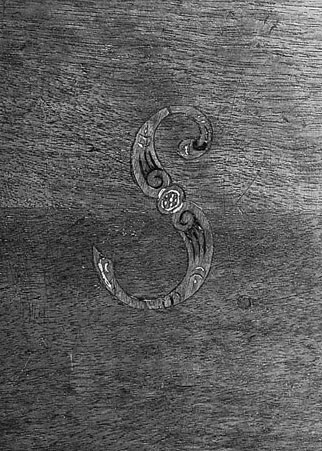
Detail of the inlay on the chest illustrated in fig. 10. (Photo, Gavin Ashworth.)

Chest, Frederick County, Maryland, 1791. Tulip poplar. H. 25 3/4", W. 49", D. 22 7/8". (Collection of the Museum of Early Southern Decorative Arts.) The feet and base molding are restored.

Conrad Doll, organ case for Peace Church, Hampden Township, Cumberland County, Pennsylvania, 1807. Painted softwoods. Dimensions not recorded. (Courtesy, Friends of Peace Church and the Pennsylvania Historical and Museum Commission; photo, Gavin Ashworth.)

Tall clock with a thirty-hour movement by John Fessler, Sr., Frederick Town, Maryland, ca. 1785. Painted softwoods. H. 84 1/2", W. 20 3/4", D. 10 7/8". (Private collection; photo, Museum of Early Southern Decorative Arts.)

Tall clock with an eight-day movement by George Schnertzel, Frederick Town, Maryland, ca. 1780. Walnut with yellow pine. H. 104", W. 19 1/2", D. 11 1/2". (Private collection; photo, Gavin Ashworth.) The base is restored.
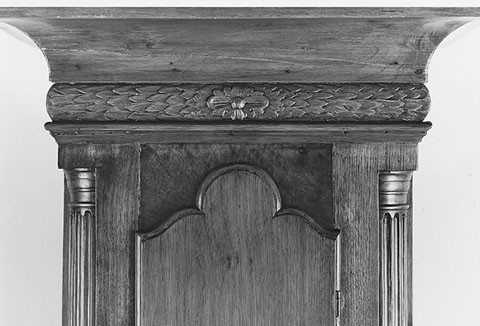
Detail of the frieze of the tall clock illustrated in fig. 16. (Photo, Gavin Ashworth.)

Tall clock with a thirty-hour movement by George Woltz, Hagerstown, Maryland, 1789. Walnut. Secondary woods and dimensions not recorded. (Illustrated in Pauline Pinkney, “George Woltz, Maryland Cabinetmaker," Antiques 35, no. 3 [March 1939]: 125.)

Tall clock with a thirty-hour movement by Jacob Young, Hagerstown, Maryland, ca. 1785. Walnut. Secondary woods and dimensions not recorded. The feet and rosettes are restored. (Private collection; photo, Gavin Ashworth.)
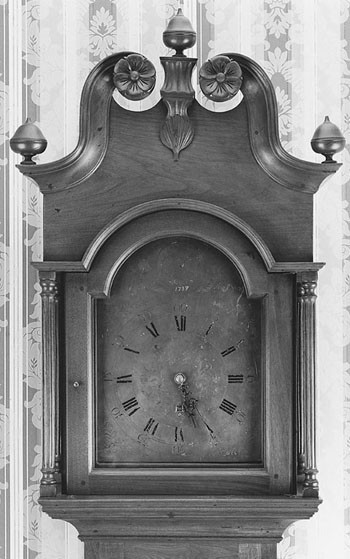
Detail of the hood of the tall clock illustrated in fig. 19. (Photo, Gavin Ashworth.)
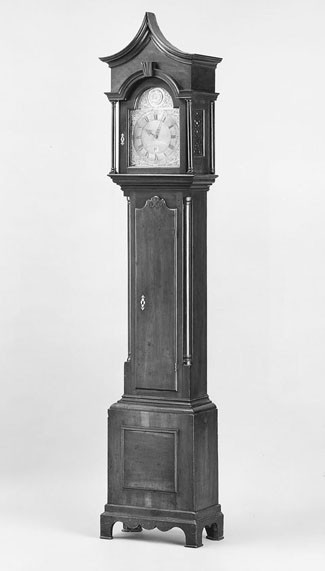
Tall clock with a thirty-hour movement signed “John Myer, Frederick Town,” Maryland, 1770–1790. Cherry with tulip poplar. H. 97 5/8", W. 20 1/8", D. 10 5/8". (Courtesy, Colonial Williamsburg Foundation.)
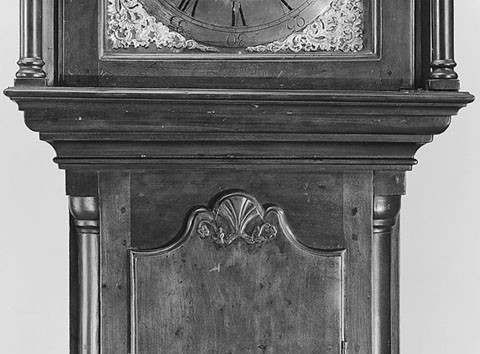
Detail of the waist door of the tall clock illustrated in fig. 21

Design for a tall clock illustrated on pl. 163 in the third edition of Thomas Chippendale’s Gentleman and Cabinet-Maker’s Director (1762). (Collection of the Museum of Early Southern Decorative Arts.)

Tall clock with an eight-day movement signed “Elijah Evans Frederick Town,” Maryland, 1780–1789. Cherry with tulip poplar. H. 98 1/4", W. 21 1/2", D. 11 1/2". (Private collection; photo, Museum of Early Southern Decorative Arts.)

Tall clock with an eight-day movement signed and dated “Thos. Liddell Frederik Town 1760,” Maryland. Walnut with tulip poplar and yellow pine. H. 102 3/8", W. 20 1/4", D. 10 1/2". (Courtesy, Historical Society of Frederick County, Maryland; photo, Gavin Ashworth.)
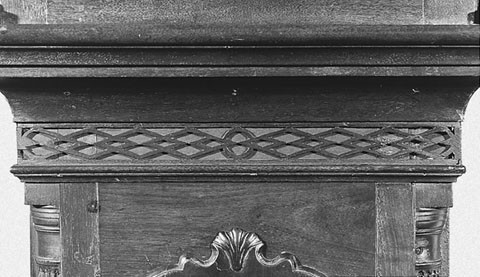
Detail of the waist door of the tall clock illustrated in fig. 25. (Photo, Gavin Ashworth.)

Desk-and-bookcase, Frederick Town, Maryland, 1780–1800. Walnut with tulip poplar. H. 96 1/2", W. 45", D. 21 7/8". (Collection of the Museum of Early Southern Decorative Arts.) The bookcase section has been shortened.
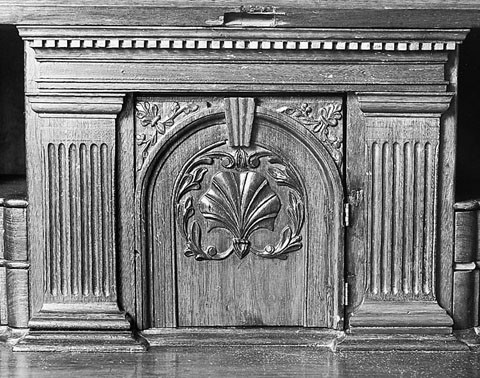
Detail of the prospect of the desk-and-bookcase illustrated in fig. 27.
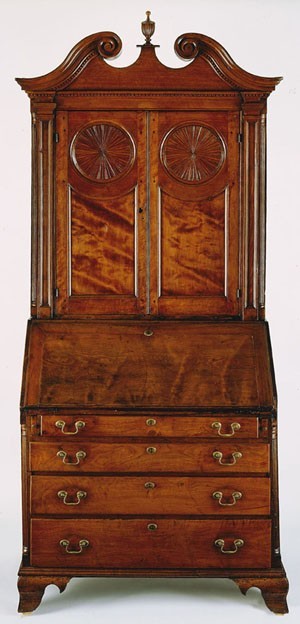
Desk-and-bookcase, Frederick Town, Maryland, 1780–1800. Walnut with tulip poplar. H. 94", W. 42 1/2", D. 23 1/2". (Courtesy, Carlyle House Historic Park, owned by the Northern Virginia Regional Park Authority; photo, Gavin Ashworth.)

Tall clock, Frederick Town, Maryland, 1780–1800. Walnut with yellow pine. H. 104 1/4", W. 21 1/4", D. 11 1/4". (Private collection; photo, Museum of Early Southern Decorative Arts.)

Detail of the hood of the tall clock illustrated in fig. 30.

Tall clock with an eight-day movement signed “John Fessler,” Frederick Town, Maryland, 1780-1810. Cherry with tulip poplar. Dimensions not recorded. (Private collection; photo, Baltimore Museum of Art.)
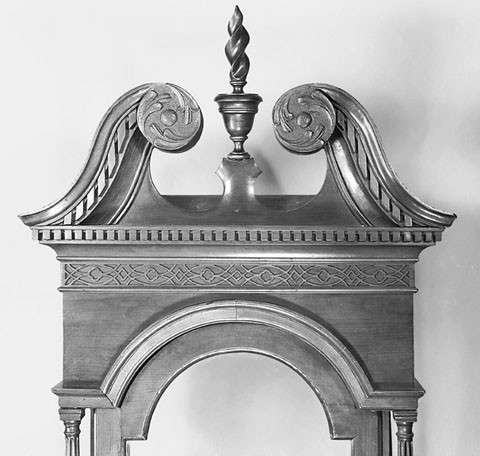
Detail of the hood of the tall clock illustrated in fig. 32.

Corner cupboard, Frederick County, Maryland, 1780–1800. Walnut with tulip poplar. H. 91". (Courtesy, Historical Society of Frederick County, Maryland; photo, Gavin Ashworth.) The feet are old replacements.
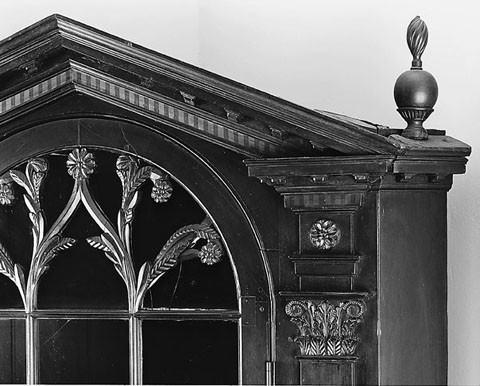
Detail of the carving on the corner cupboard illustrated in fig. 34. (Photo, Gavin Ashworth.)
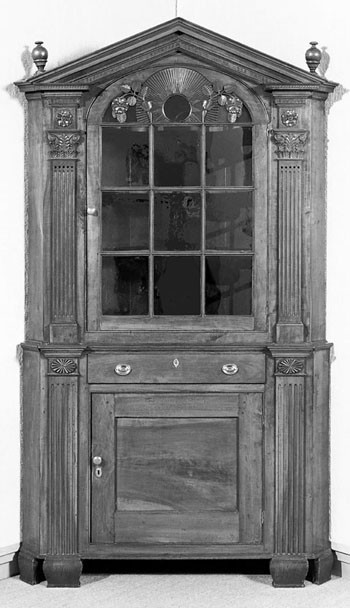
Corner cupboard, Frederick County, Maryland, 1780–1800. Walnut with tulip poplar. H. 89 1/2". (Private collection; photo, Museum of Early Southern Decorative Arts.) The flame sections of the finials are missing.
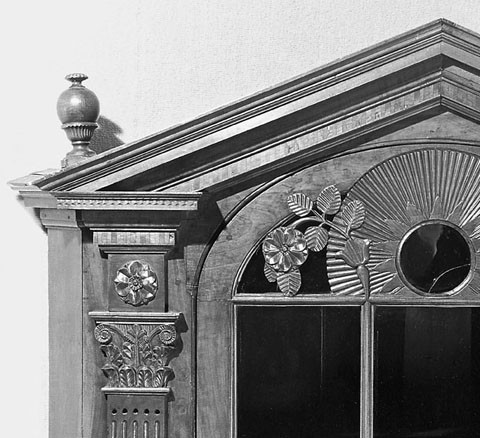
Detail of the carved fan and mullions on the door of the corner cupboard illustrated in fig. 36.
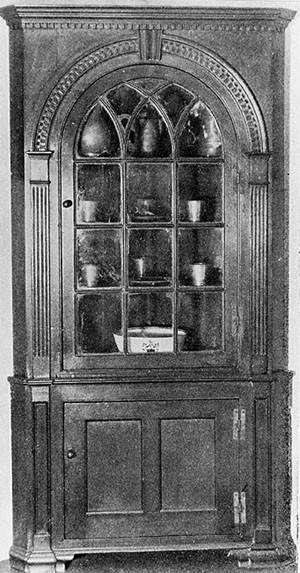
Corner cupboard, Frederick County, Maryland, 1780–1800. Woods and dimensions not recorded. (Illustrated in Wallace Nutting, Furniture Treasury [New York: MacMillian Co., 1928], fig. 534.)

Corner cupboard, Frederick or Washington County, Maryland, 1790–1810. Tulip poplar. H. 100", W. 48 1/2". (Private collection; photo, Museum of Early Southern Decorative Arts.)
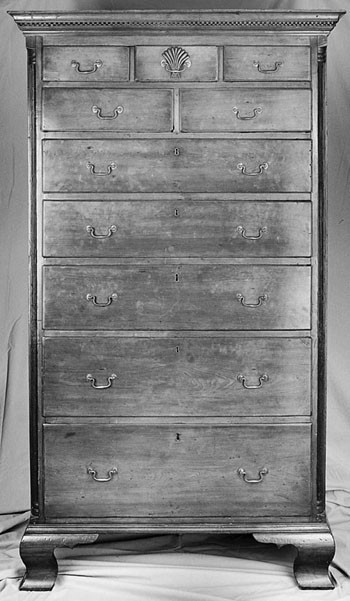
Chest of drawers, Frederick County, Maryland, or Washington County, Virginia, 1780–1800. Walnut with yellow pine. H. 77 7/8", W. 39 1/4", D. 23 1/4". (Private collection; photo, Greg Vaughan.) The feet and base molding are replaced.

Detail of the shell appliqué and cornice molding on the chest illustrated in fig. 40.
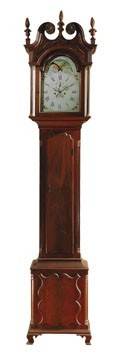
Tall clock, Frederick Town, Maryland, 1785–1800. Walnut with tulip poplar. H. 106", W. 23", D. 11 1/8". (Private collection; photo, Gavin Ashworth.)

Detail of the hood of the tall clock illustrated in fig. 42. (Photo, Gavin Ashworth.)

Tall clock with an eight-day movement signed “John Fessler,” Frederick Town, Maryland, 1785–1800. Walnut with tulip poplar and white pine. H. 103 1/2", W. 23", D. 11 1/8". (Private collection; photo, Museum of Early Southern Decorative Arts.)

Tall clock with an eight-day movement signed “Valentine Steckell,” Frederick Town, Maryland, 1790–1810. Walnut with tulip poplar. Dimensions not recorded. The feet and base molding are restored. (Courtesy, Historical Society of Frederick County, Maryland; photo, Gavin Ashworth.)
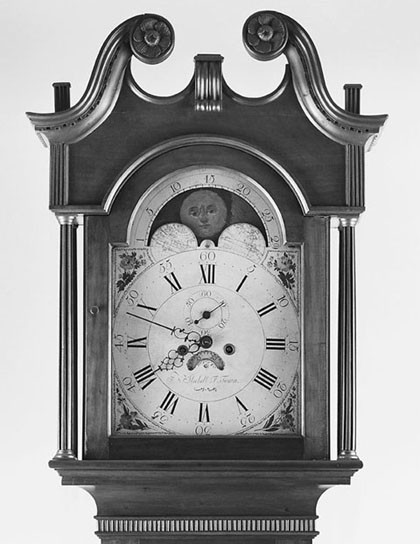
Detail of the hood of the tall clock illustrated in fig. 45. (Photo, Gavin Ashworth.)
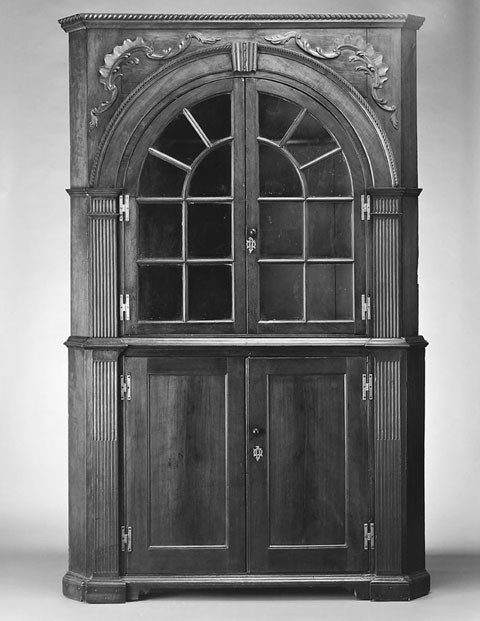
Corner cupboard, Frederick County, Maryland, 1780–1800. Walnut with yellow pine. H. 89 1/2", W. 50 1/2", D. 32 1/4". (Courtesy, Sumpter Priddy III, Inc.) The upper case has been shortened.

Detail of one of the tympanum appliqués of the corner cupboard illustrated in fig. 47.
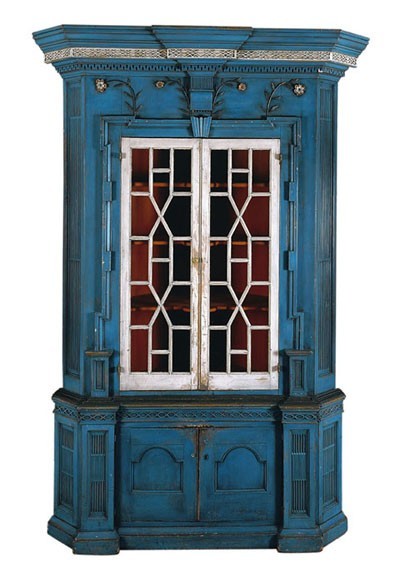
Corner cupboard, Frederick County, Maryland, 1780–1800. Yellow pine; polychrome paint. H. 96", W. 56 1/2". (Private collection; photo, Gavin Ashworth.)

Detail of the entablature and cornice of the corner cupboard illustrated in fig. 49. (Photo, Gavin Ashworth.)
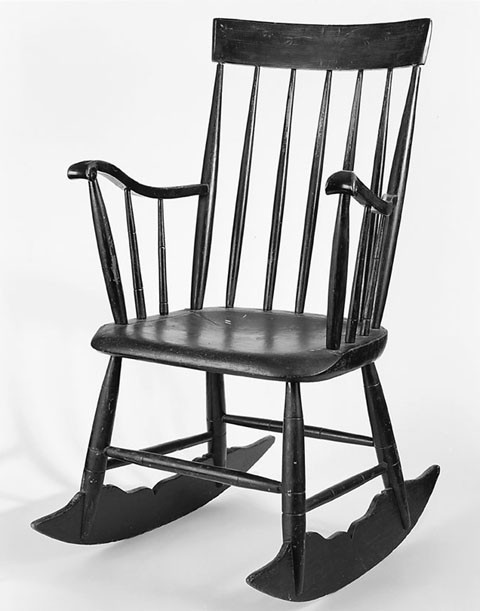
Windsor chair, Frederick County, Maryland, ca. 1810. Maple and tulip poplar; painted. H. 33 1/2", W. 21 1/4", D. 16". (Private collection; photo, Gavin Ashworth.)
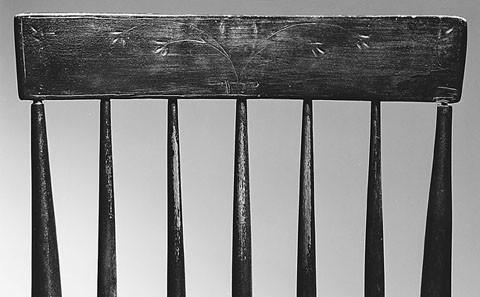
Detail of the carving on the crest rail of the Windsor chair illustrated in fig. 51. (Photo, Gavin Ashworth.) The chip carving on the crest rail has flowers that turn outward like the relief carving on a group of Frederick County cupboards.
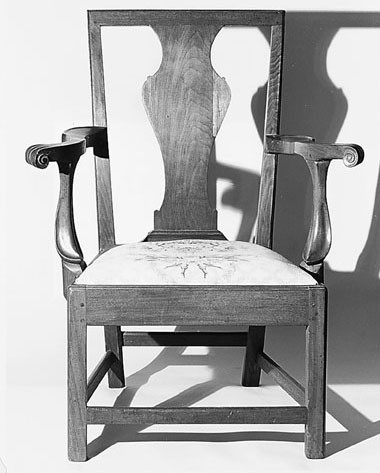
Armchair, Frederick County, Maryland, 1770–1790. Walnut with yellow pine. H. 39 1/8", W. 22 3/8" (seat). (Private collection; photo, Museum of Early Southern Decorative Arts.) This chair descended in the Tyler family of “The Shelter,” in Prince William County, Virginia.

Side chair, probably Hagerstown, Maryland, 1770–1790. Walnut. Secondary woods and dimensions not recorded. (Illustrated in Pauline Pinkney, “George Woltz, Maryland Cabinetmaker,” Antiques 35, no. 3 [March 1939]: 124–27.)

Side chair, Frederick Town, Maryland, 1770–1790. Walnut. H. 40 1/2", W. 22 1/4", D. 19". (Courtesy, Colonial Williamsburg Foundation.)

Armchair, Frederick Town, Maryland, 1770–1790. Walnut with white pine. H. 37 1/4", W. 21 7/8" (seat). (Private collection; photo, Museum of Early Southern Decorative Arts.)
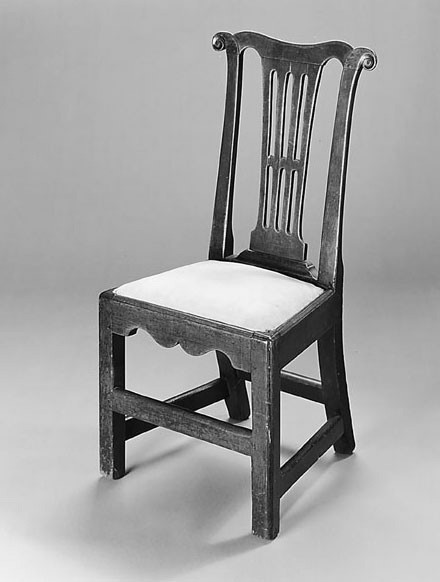
Side chair, Frederick County, Maryland, 1770–1800. Walnut. H. 37 1/2", W. 18 5/8", D. 14 5/8". (Private collection; photo, Sumpter Priddy, Inc.)
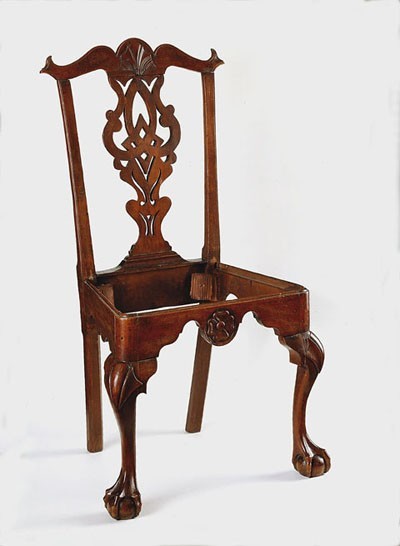
Side chair, Frederick Town, Maryland, 1780–1800. Walnut with yellow pine. H. 39 1/2", W. 17 1/4" (seat). (Courtesy, All Saints Parish; photo, Gavin Ashworth.)

Corner cupboard, Frederick County, Maryland, 1780–1800. Cherry with tulip poplar and yellow pine. H. 107", W. 47 1/2". (Courtesy, Henry Ford Museum and Greenfield Village.)
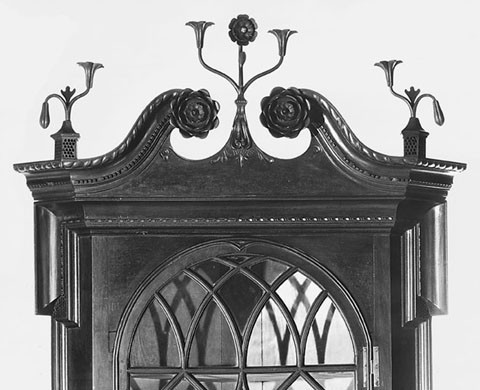
Detail of the pediment of the corner cupbard illustrated in fig.59.
